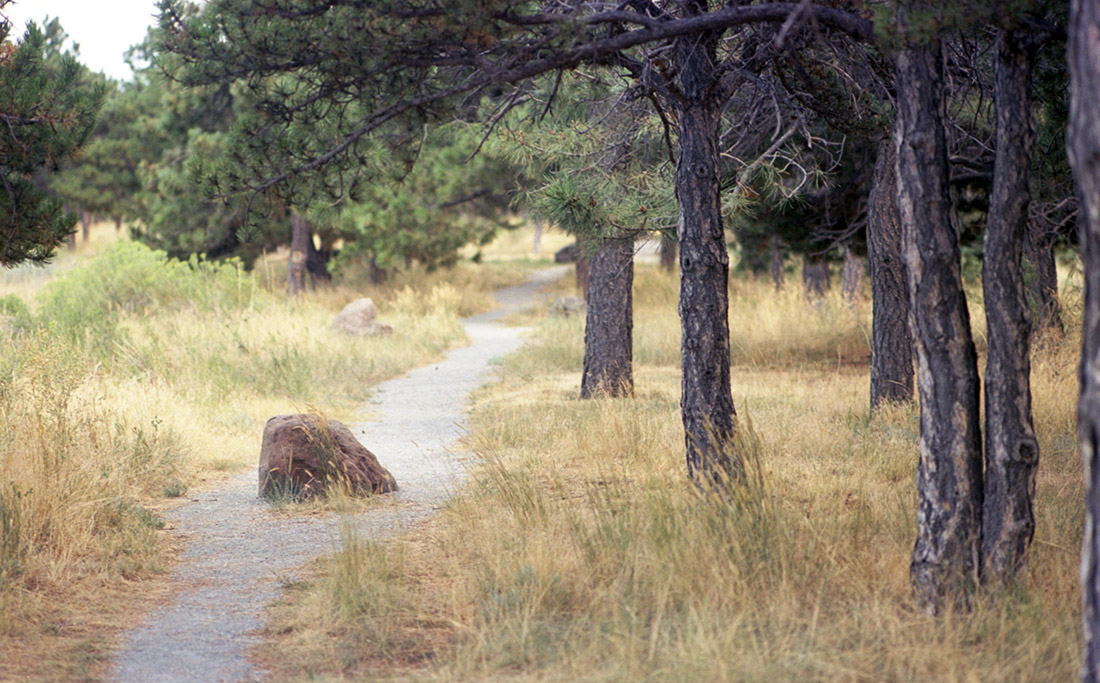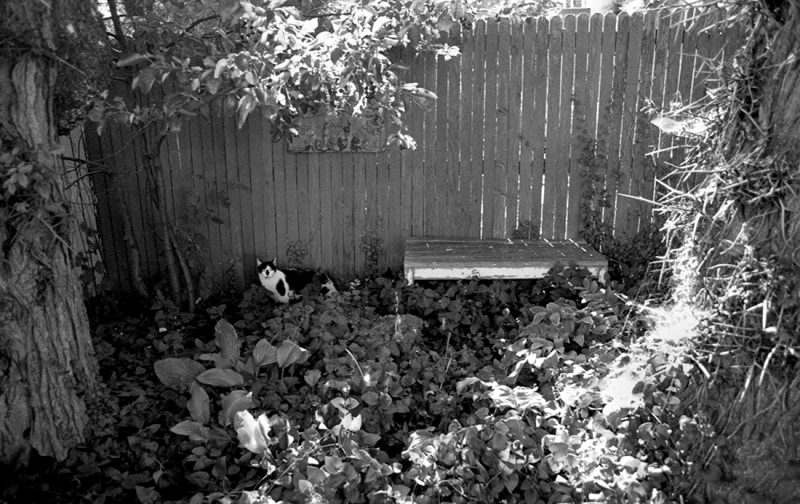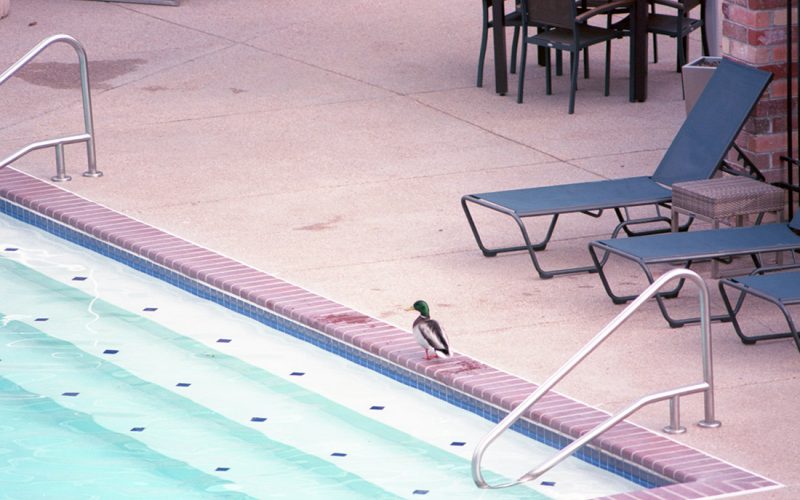
There has been a real hullabaloo about a recent blog post by photographer Johnny Patience, whose exposure philosophy has been debated hotly in the days since.
Some have torn Patience to bits, others have politely differed on certain points, and a few have praised Patience as a genius. That’s pretty much the response to anything posted on the internet these days, isn’t it?
The most controversial aspect of the whole article is its title: “The Zone System is Dead.” In it, Patience explains his system of exposing, and doesn’t really back up the headline.
Some have pointed out that this might have been an attempt to draw readers with a controversial title. Other have pointed out that, while his science isn’t quite spot on in the article, he’s largely just following the old adage, “Expose for the shadows; develop for the highlights.”
Moreover, he points out that his printing experience is limited and gives the impression that his goal is to produce a negative that can be scanned easily for a good digital copy of the image. Which is what I do most of the time, too, following the same adage.
Now what I wonder is this: If a well-exposed negative prints well, and is therefore desirable, would film scanner manufacturers design their products to do their best work on negatives exposed and developed differently, or would they want the device to be most effective at producing a good digital copy of a negative that’s already been created for printing, since that likely would include the vast majority of the negatives created by professional photographers over the last century-plus?
Based on that logic, I’d guess that, especially when scanners designed for film first started to become available and were very expensive, because the high cost would have had to be justified by either the volume or the value of the resulting digital products, they would most likely be purchased by schools and labs, or by individual professionals whose work was worth digitizing early (and therefore targeted at that market).
I could be completely wrong about that, but wouldn’t it make sense that, at least at one time, scanners were probably set up to do (at least) pretty well on a negative that was produced with the intention of being able to produce a good print in the darkroom? Sometimes I’m too logical for my own good, though.
Based on those assumptions, it seems that a negative that’s good for the darkroom is likely as good, or nearly as good, for the computer desk. Moreover, the resulting digital product is much more easily manipulable than a darkroom print (and almost infinitely less expensive to create and manipulate, in the long run, especially with reproducible results). Wouldn’t it make sense, then, to produce negatives good for printing rather than gearing them directly toward scanning?
Okay, that’s all just rambling thinking. When all is said and done, what I want to do is be able to make good prints from my negatives, so I’m going to focus on that. I hope that they scan well in the meantime, and it does feel like the negatives that look most likely to produce a good darkroom print also produce the best results on the scanner.
My understanding of Ansel Adams and Fred Archer’s Zone System is limited at this point, mostly because I simply haven’t made the effort to practice it and understand it thoroughly. Since I primarily use the Pentax 6×7 system these days, and therefore use roll film, I can’t as easily focus on the Zone System.
Yes, you can use a number of methods to achieve near-Zone System results with roll film. But, as many have pointed out, the Zone System is much more a way of thinking through all the steps between seeing a scene and creating a final print, and a method of working toward a negative that will achieve that final print visualization, than it is just a system of exposure calculation.
When I first read Patience’s post, I let slide some of the flaws with his method once it became obvious that he was mainly advocating over-exposure as a way of ensuring good shadow detail on roll film. As a basic way of guaranteeing good shadow detail, over-exposure does work.
Michael Fraser pointed out, rather quickly, some of the errors and missed assumptions. Matthew Thompson, also, politely disagreed with many of the details. Both got me thinking.
Was I too hasty in my initial positive assessment of Patience’s article? Probably. Was he coming out of left field? Not really.
As both Michael and Matthew pointed out, photography is as much art as science, and art is about emotion and gut feelings, and going your own way. Art is about creating with whatever method works for you. So while the Zone System may not, in fact, be dead, Patience is free to expose however he likes if he’s happy with the results — and the world may be a better place with his negatives in it than without.

My take? The Zone System isn’t dead. It’s designed primarily for sheet film, anyway, and Patience is laser-focused on 35mm Tri-X. That’s a pretty unique situation, and Tri-X may be the most versatile and bullet-proof film stock still available in the market (and rightly so: Kodak designed it in large part for photojournalists to use in arid deserts, sweltering jungles, or the freezing deck of an Arctic ice-breaker, all with equally predictable performance even when developed in the bathroom at a high school baseball field).
You large-format guys (looking at you, Craig) shouldn’t lose any sleep over this premature obituary. For the rest of us, the old adage (repeated below) will continue to serve our roll-film exposure needs for decades.
“Expose for the shadows; develop for the highlights.”
Henry Horenstein came right out and said it in “Beyond Basic Photography: A Technical Manual” (Little, Brown and Company; 1977).
I’ve used his advice to expose several hundred rolls of Ilford Pan F Plus, my preferred film for daylight photography. I gravitated toward slower films because they allow me more control of depth-of-field in Colorado’s extremely bright sunlight without needing a neutral density filter. Pan F Plus, while not free of grain, offers a fine, cubic structure I find pleasing, and seems to produce very even, predictable grain in highly dilute HC-110 (1+63). Pan F Plus doesn’t have quite the latitude or infallibility of Tri-X, though.
I’ve found my results light-years ahead of what I was producing before studying this method of metering and exposure, and I have committed it largely to gut level at this point. When I first started, I was backstopping the Pentax 6×7 TTL prism’s meter with my Sekonic L-358 Flash Master light meter, but after learning its characteristics I decided to trust the internal meter.
A few specific pieces of advice on this subject from Horenstein have entered my internal exposure decision-making process, and I’d like to share them here:
If in doubt, overexpose.
“Overexposed negatives, as a rule, make better prints than underexposed negatives, since their shadows will always render full detail.” (p. 10)
If you’ve been following my work for any amount of time, you may have noticed that I used to underexpose almost everything. Now I probably only underexpose half the time, and it’s more often now because I’m trusting a light meter in an unknown camera, using long-expired film, or just eyeballing exposures during testing. Since assimilating this piece of Horenstein’s advice into my methods when my intention is truly to make a good negative, I’ve rarely underexposed at all.
As discussed in Patience’s article, and the responses from Fraser and Thompson, negative film’s latitude leans more toward the overexposure side than the underexposure side. The film simply can handle excess light better than it can handle insufficient light. In most scenes, the risk of blowing the highlights with negative is relatively small.
Of course, when the scene is one of extreme contrasts, which I encounter a lot in Colorado, you have to take that into account, and take into account what your light meter is really telling you — because it can’t tell you how to expose your film.
Your light meter is telling you about grey.
It’s not actually trying to tell you the maximum, or minimum, or even a scene-wide average value. It’s trying to tell you that whatever it’s pointed directly at will deliver a medium grey on the print at the indicated exposure. Horenstein said it better:
“Light meters are calibrated to indicate an average, or middle grey, print value — one that reflects 18 percent of the light reaching it — regardless of the subject’s brightness. If you point the meter at a solid white wall, the indicated exposure will produce a medium density (on the negative) and a middle grey wall (on the print); if you point the meter at a solid black wall, the indicated exposure will still produce a medium density and a middle grey wall.” (p. 13)
It’s worth noting that more modern cameras, in particular digital cameras, are calibrated to measure 12 percent luminance on a grey card, or something more like that, rather than the classic 18 percent grey. There’s a lot of uncertainty with just exactly what the meter is looking for, but the goal is still to get a middle grey.
18 percent grey, in printers’ terms, apparently is the grey that looks halfway between black and white; therefore, the meter is trying to put whatever it’s seeing in the rough center of the tonal range of the film and assuming there will be an equal amount of tonal range both above and below that point to accommodate the darkest shadows and brightest highlights likely to be present in whatever scene the meter is seeing.
This information was revelatory for me. In Colorado, on the plains, on a sunny day, everything that isn’t black is white. Contrast is high. When I meter a white building and expose for that, I don’t get a white building — I get a grey building. And dark vegetation. When I add a stop to that, I get a much more white building, and consequently better-exposed everything else, too.
Overexpose bright pictures; underexpose dark ones.
“If the indicated exposure includes primarily light values, the negative will be underexposed; if the indicated exposure includes primarily dark values, the negative will be overexposed.” (p. 16)
Wow, what a difference understanding that made. Anyone can read the value off a light meter; understanding what that information really means to you, based on what the meter is pointed at and what else is in the frame, is precisely what the Zone System was designed to help you translate to the negative, and eventually the print.

“Take the meter reading off a middle grey area or off a subject with approximately equal amounts of dark and light values. Or, point the meter at a bright area, and increase the indicated exposure by one or two stops; or point the meter at a dark area, and decrease the indicated exposure by one or two stops.” (p. 16)
This is the opposite of what your initial gut feeling tells you. Until you’ve incorporated this knowledge into your method, your reaction on seeing a really bright white wall in the viewfinder is probably going to be to err on the side of underexposure — because it’s so bright! — and the opposite for a black wall.
Using this method, applied to every frame on a roll that I then develop normally, I get exposures that are very consistent. These negatives have areas of nearly clear backing and areas of near-black silver. In between is a complete range of greys, and the contrast is very obvious and consistent from frame to frame, which is right where I want to be (since I’m not anywhere near ready to try film densitometry). For now, this is working.
Since the goal is to produce an entire roll of good negatives, it seems important to have a system that produces consistent results from frame to frame. Every frame won’t be absolutely perfect, or even as perfect as you could potentially make it (if you want perfection, use the Zone System — assuming it fits your definition of perfection), but they will be consistently good and very printable.
If the Zone System and a large format camera were absolute requirements for making good photographs, we would have had only a handful of worthy photographers in the last few decades, which proves — to me, at least — that excellent photographs can still be made without the kind of precision Ansel Adams demanded.
Interestingly, Alan Ross covered this whole topic six months ago and arrived at his own conclusion in “Ansel Adams’ Zone System — Darling or Dinosaur?”
Me? I’m going to keep exposing for the shadows and developing for the highlights.
